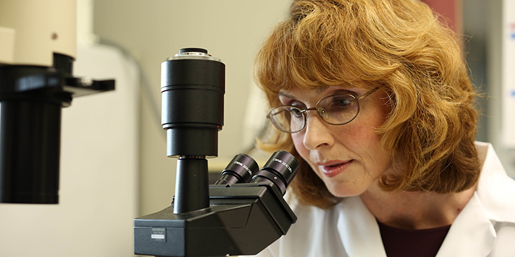Breastfeeding is the gold standard in infant nutrition, and it is the best way to support your baby's immune system. That is why scientists around the world have spent a lot of time and effort on researching to try to harness the benefits of this marvelous nutrition to improve infant formulas.
Rachael Buck, PhD, is a research fellow, immunologist, and head of Global Gut Health Platform at Abbott (Ohio, USA), working on the forefront of infant nutrition. She is leading the pioneering research program for Human Milk Oligosaccharides (HMOs) at Abbott.
HMOs are beneficial, prebiotic-like nutrients found in breast milk that support intestinal and overall health.
Abbott has driven the clinical research behind HMOs for more than 15 years, paving the way for this breakthrough ingredient to be added to infant formulas.
The clinical research on HMOs has demonstrated improved immunity benefits similar to breast-fed infants.
Buck is one of the scientists who have the most publications about HMO in the world, having authored over 50 journal articles and filed over 55 patents.
During the HMO summit organized at Abbott’s R&D center in Granada, Spain recently, we had a chance to interview Racheal Buck to understand this component of breast milk and why it is so important to add HMO to Similac formula.
As people may know, you are one of the leading scientists in the field of immunity health. Can you share when you started this journey and what inspired you to research breast milk?
I did my PhD in immunology at Cambridge University because I knew studying about the immune system would help me to do very meaningful work that makes an impact on a lot of lives. I started my job at Abbott 24 years ago, and I’ve worked on many innovations.
My colleagues and I all agree that breast milk is considered as the gold standard to feed an infant, and breast-fed babies tend to have stronger immune systems. Abbott has been making formula since the 1920s and when we develop formula, we want to mimic breast milk wherever possible. With this mission, we strived to find out some of the secrets in breast milk and knew HMOs definitely would be a break-through innovation in pediatric nutrition.
So we began the journey with these questions: what is it about the breast-fed babies’ immune system that helps it fight off infections or fight off allergies more readily? Why are HMOs so abundant? What are they doing? I just had a hunch that there has got to be something to it.
After decades of researching, what did you and your colleagues at Abbott find out?
As the best source of nutrition, a mother’s breast milk facilitates linear growth and weight gain, enhances cognitive ability and especially promotes immune functions Breastfeeding reduces infant risks of major infectious and inflammatory diseases.
We focused on studying breast milk components and found it includes three main macronutrients that are essential for babies’ development: Proteins, Carbohydrates and Lipids.
Human milk oligosaccharides are unique, non-digestible complex carbohydrates with a prebiotic role; in other words, they feed the healthy bacteria in our gut. They are the third most abundant component in breast milk, after fat and the carbohydrate called lactose, and make up to nearly ten percent of breast milk—more than protein.
Can you share more about how HMOs nourish a baby’s immune system?
HMOs feed the beneficial bacteria in the gut where around 70 percent of a baby’s immune system is found But what’s very special about HMOs is that they are absorbed into the bloodstream so they support the immune system beyond the gut.
There are over 150 different types of HMOs and the most abundant one in most mothers’ milk is 2'-Fucosyllactose or 2’-FL.
As well as its prebiotic role, 2’-FL HMO is beneficial to babies’ gut and immune system development.
Not only do HMOs support the immune system through action in the gut, they may also directly affect gut health.
In fact, HMOs have been shown to support digestion; and have also been linked to a reduced risk of gut and respiratory infections.
With the huge potential of HMOs to babies’ development, my team of scientists at Abbott have spent more than 15 years studying how to add this special ingredient to baby formula.
I’ve worked on many innovations and HMOs had never been added to formula before. Personally, I feel very proud that our work may have a potentially life-changing impact on both parents and babies.
|
|
What is the significance of Abbott introducing Similac with HMOs?
Nothing can replace breast milk, but for moms who cannot or choose not to breastfeed, or those who need supplements, an infant formula with 2’-FL HMO is one step closer to closing the gap.
By harnessing the unique qualities of 2’-FL HMO in Similac formula, we can support babies’ developing digestive and immune system and give them a benefit once only available to breast-fed babies.
After more than 20 clinical and pre-clinical studies, Similac is the first product in the world and in Vietnam that is fortified with HMOs and this is one of the biggest break-through advances in pediatric nutrition in the last decade.
Similac also contains DHA, Lutein and Natural Vitamin E, which constitute an important blend to support a baby’s brain development. Now with the fortification of HMOs in the composition, Similac can bring dual benefits to support the development of immunity and cognition, therefore significantly narrowing the gap between breast-fed and formula-fed babies.
I’m very happy to know that Similac with HMOs has been the trusted choice of over one million moms worldwide since its first launch in 2016.
At Abbott, we want to give parents choices and ensure that babies have the strongest possible start in life.
As a mom, you will also want the best things for your children. Does that love of a mother urge you to be dedicated to HMO research?
Yes! I’m not only a scientist but also a mother of three sons. This is a kind of motivation for me to try harder to improve the formula for more babies and families.
My eldest son Alec had jaundice in his first few weeks of life. That was quite a hard time. Although we were able to avoid hospitalization, he had to be fed every two hours. He was in need of intake monitoring when my husband and my mom fed him. So besides breast milk, he had the support from infant formula that made an important impact on his life and our lives.
The potential of HMOs is still very huge! My team at Abbott is very curious to understand more about additional benefits of HMOs.
As the pioneer in the field, we lead the HMO revolution and we have over 100 scientists globally who are working on it.
To reveal some of our recent researches, HMOs are divided into 2 categories – neutral and acidic HMOs.
We started researching acidic HMOs and found that they also have the potential to support immunity and cognition, and especially help with allergy. Therefore, we started trying to combine these two types together to maximize the potential benefits of this unique ingredient for children worldwide.
Thank you for the conversation and we hope to hear more discoveries of HMOs from you and Abbott scientists soon!


















































